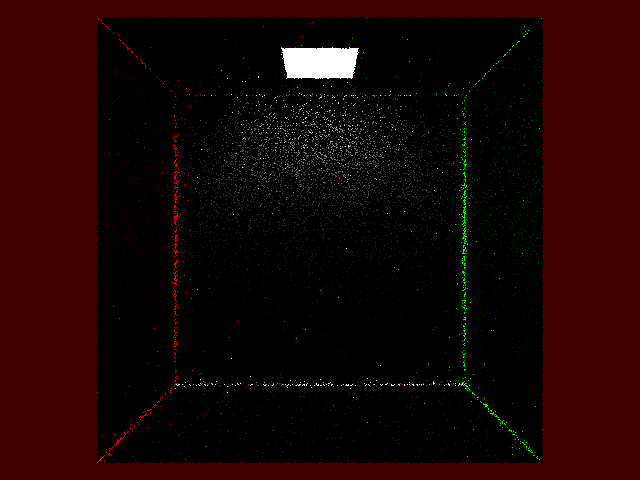
 |
| Corner effects from incorrectly weighting diffuse rays with 1/dist^2 attentuation. |
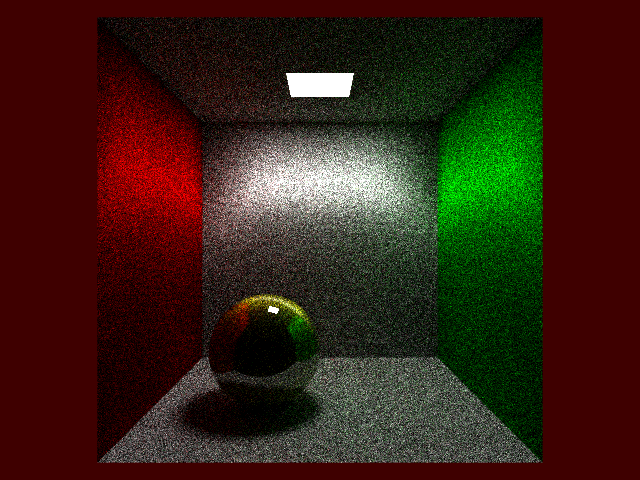 |
| Cornell box with a single relfective sphere. 784 samples per pixel with jittered sampling and a box filter reconstruction. |
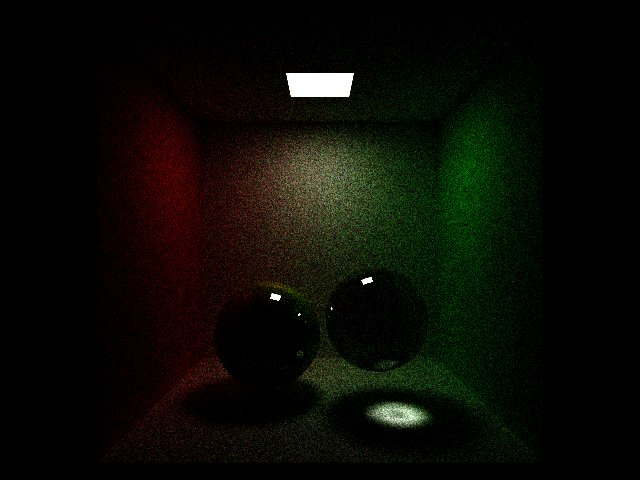 |
| Far too dark! 2300 samples per pixel with jittered sampling and a box filter reconstruction. |
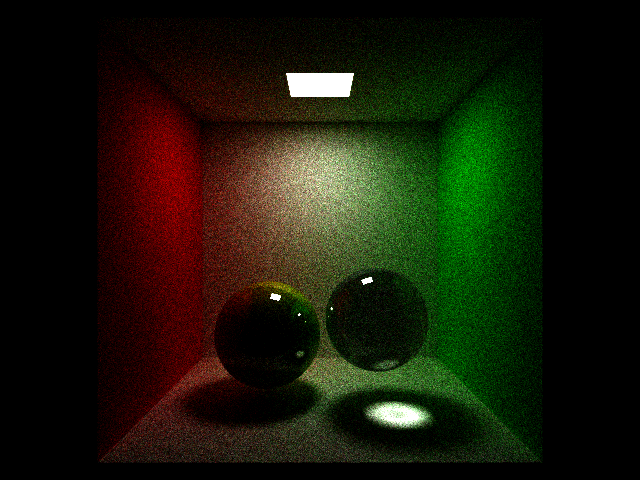 |
| Still too dark, but getting better! 2700 samples per pixel with jittered sampling and a box filter reconstruction. |
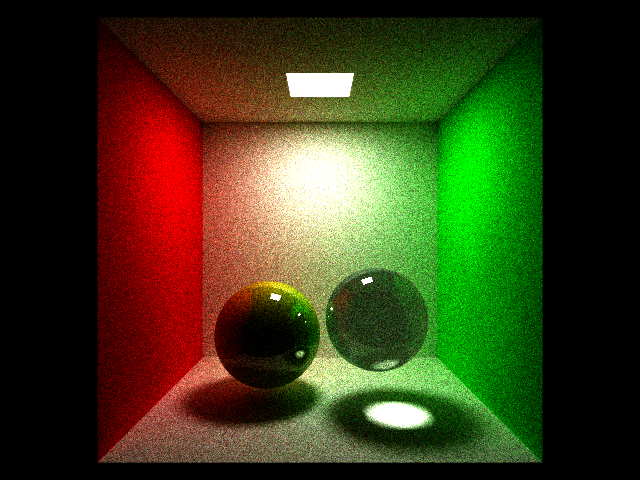 |
| 3700 samples per pixel with jittered sampling and a box filter reconstruction. The left wall is red, the right wall is green, and the back wall, floor, and ceiling are all white. The left sphere is partially reflective with a yellow diffuse componant, the right sphere is reflective and refractive. |
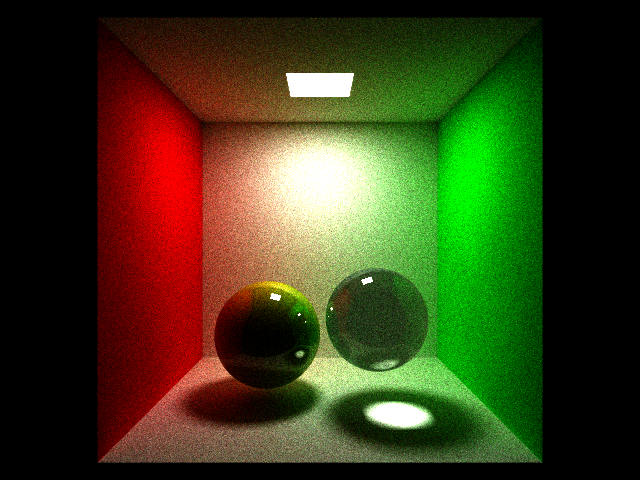 |
| 3:00 PM, Friday. 7100 samples per pixel with jittered sampling and a box filter reconstruction. |
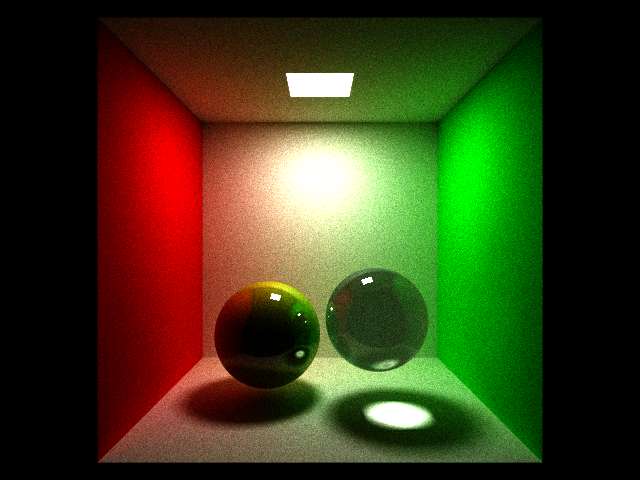 |
| 3:26 PM, Saturday. 15,200 samples per pixel with jittered sampling and a box filter reconstruction. |